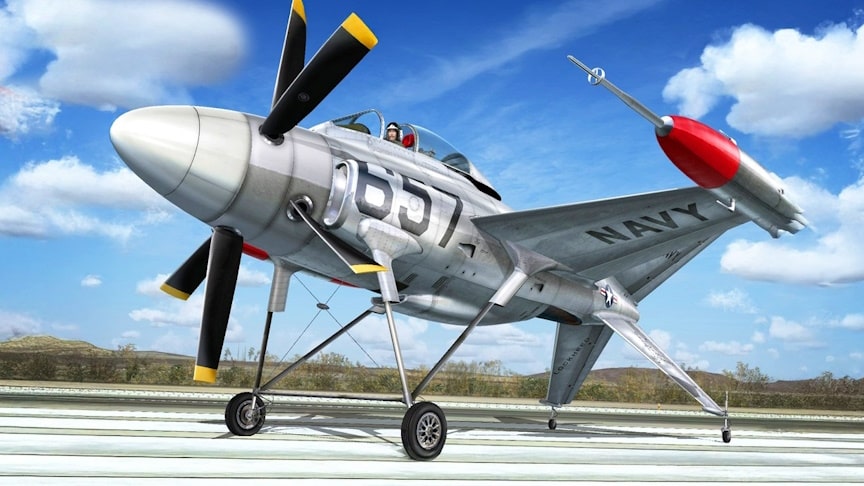The Lockheed XFV is an American experimental tailsitter prototype aircraft built by Lockheed in the early 1950s to demonstrate the operation of a vertical takeoff and landing (VTOL) fighter for protecting convoys.
source.image: Found And Explained
Characteristics
- Crew: 1
- Length: 11.23 m
- Wingspan: 9.4 m
- Height: 4.5 m
- Wing area: 22.85 m2
- Maximum speed: 930 km/h
- Cruise speed: 660 km/h
- Service ceiling: 13,100 m
- Rate of climb: 55.0 m/s
The XFV was powered by a 5,332 hp (3,976 kW) Allison YT40-A-6 turboprop engine driving three-bladed contra-rotating propellers. The tail surfaces were a reflected cruciform v-tail (forming an x) that extended above and below the fuselage.
The aircraft had an ungainly appearance on the ground with a makeshift, fixed landing gear attached. The XFV-1 was able to make a few transitions in flight from the conventional to the vertical flight mode and back, and had briefly held in hover at altitude.
Advertisement
Performance remained limited by the confines of the flight test regime. With the realization that the XFV’s top speeds would be eclipsed by contemporary fighters and that only highly experienced pilots could fly the aircraft, the project was cancelled in June 1955.











